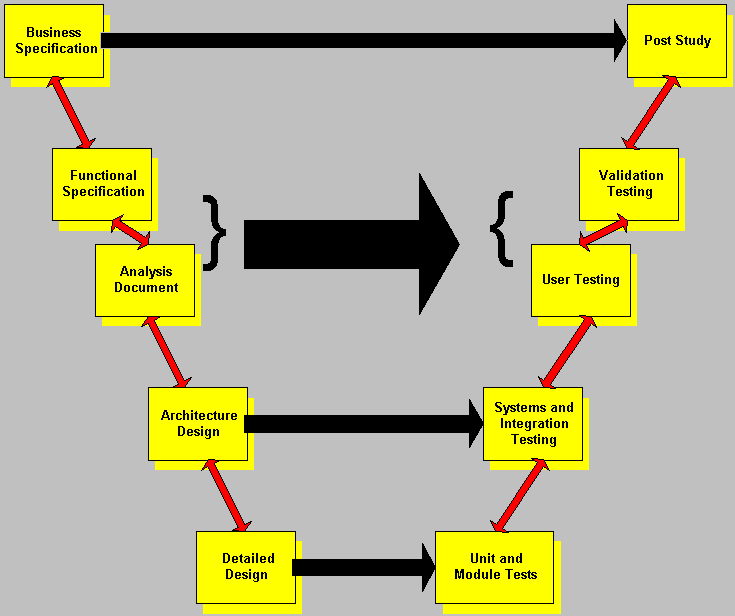
The purpose of this phase of the project is to determine the success of the system and to use the experience of the entire development life cycle to feed back into the company's processes.
The documentation and customer support organizations will be best equipped to create plans and procedures for determining the success of the deployed system.
The directors and executives, with input from team leaders, will determine the actual time, cost, staff, and other resources utilized in the project's life cycle.
The documentation and tasks proposed in this document promote the ability to parallel activities within the development life cycle. Every single document that is created as part of the development life cycle will be reused and modified during the development of the current release as well as future releases of the project.
The following diagram illustrates the reuse of the documentation
throughout the life cycle as well as iteration that occurs between stages. Not all stages
of the life cycle are shown. Instead, the documentation preparation, review, and testing
phases are the focus.

At a high-level, inter-departmental view many activities will be occurring in parallel. The delivery milestone will impose time constraints for the marketing, sales, development, training, documentation, and other organizations.
This section serves to illustrate the activities that can be paralleled within the development organization.
Within the analysis, design, and implementation stages of the development life cycle, the development teams will be organized by sub-systems and layers of the architecture. Each team will be analyzing, designing, and implementing in parallel with the other teams. The system framework/architecture team will work in parallel with and across the other teams. For example, the system framework team will be responsible for building frameworks and class libraries that are used by the other teams. Because of the dependencies of the other teams on the system framework team, the design and implementation of the architecture and class libraries will begin earlier than the development of the sub-systems that are functionality driven.
Business Specification Analysis Detailed Design Testing Post Study Functional Specification Architecture Design Implementation Deployment and Maintenance HOME